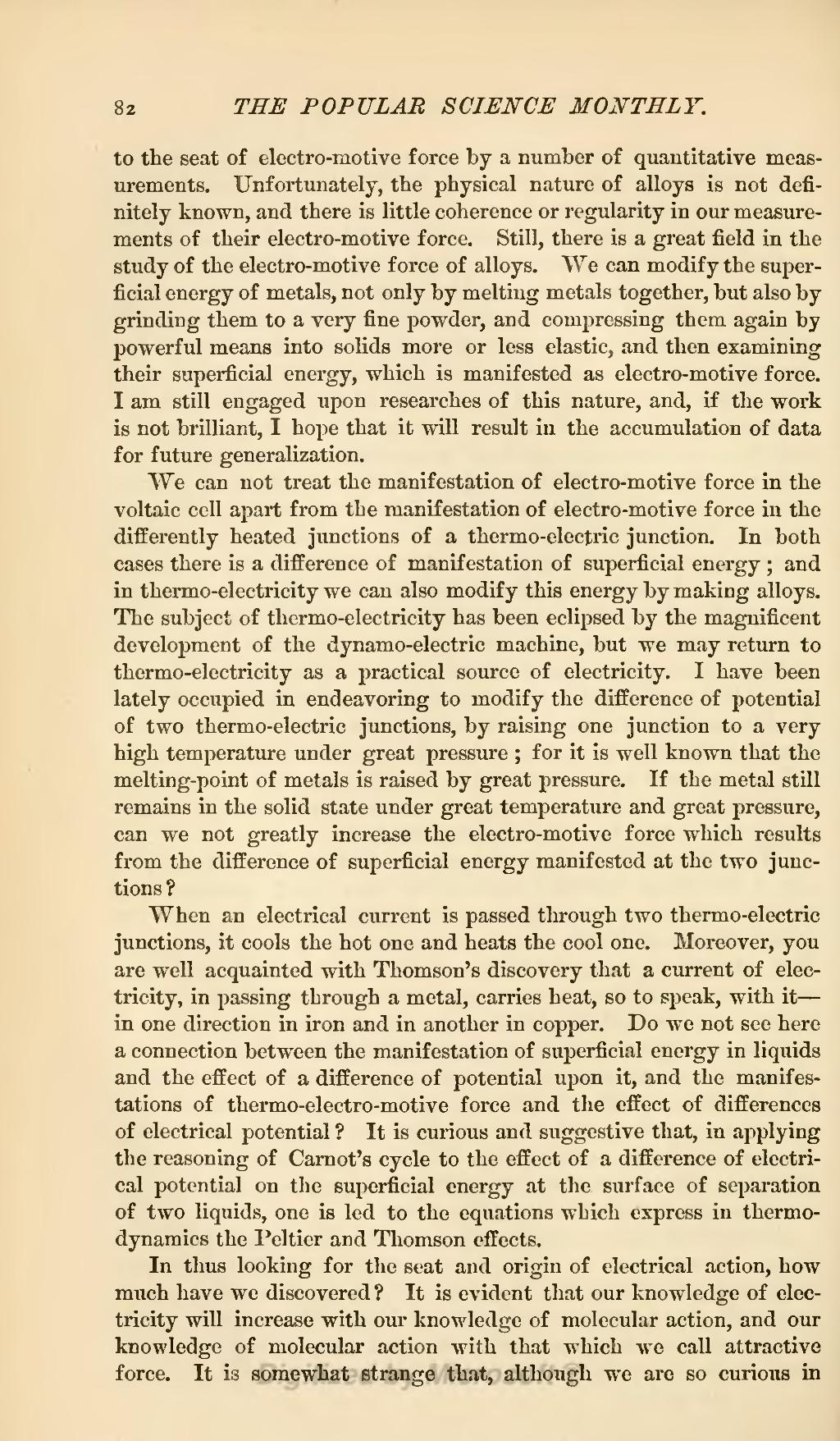to the seat of electro-motive force by a number of quantitative measurements. Unfortunately, the physical nature of alloys is not definitely known, and there is little coherence or regularity in our measurements of their electro-motive force. Still, there is a great field in the study of the electro-motive force of alloys. We can modify the superficial energy of metals, not only by melting metals together, but also by grinding them to a very fine powder, and compressing them again by powerful means into solids more or less elastic, and then examining their superficial energy, which is manifested as electro-motive force. I am still engaged upon researches of this nature, and, if the work is not brilliant, I hope that it will result in the accumulation of data for future generalization.
"We can not treat the manifestation of electro-motive force in the voltaic cell apart from the manifestation of electro-motive force in the differently heated junctions of a thermo-electric junction. In both cases there is a difference of manifestation of superficial energy; and in thermo-electricity we can also modify this energy by making alloys. The subject of thermo-electricity has been eclipsed by the magnificent development of the dynamo-electric machine, but we may return to thermo-electricity as a practical source of electricity. I have been lately occupied in endeavoring to modify the difference of potential of two thermo-electric junctions, by raising one junction to a very high temperature under great pressure; for it is well known that the melting-point of metals is raised by great pressure. If the metal still remains in the solid state under great temperature and great pressure, can we not greatly increase the electro-motive force which results from the difference of superficial energy manifested at the two junctions?
When an electrical current is passed through two thermo-electric junctions, it cools the hot one and heats the cool one. Moreover, you are well acquainted with Thomson's discovery that a current of electricity, in passing through a metal, carries heat, so to speak, with it—in one direction in iron and in another in copper. Do we not see here a connection between the manifestation of superficial energy in liquids and the effect of a difference of potential upon it, and the manifestations of thermo-electro-motive force and the effect of differences of electrical potential? It is curious and suggestive that, in applying the reasoning of Carnot's cycle to the effect of a difference of electrical potential on the superficial energy at the surface of separation of two liquids, one is led to the equations which express in thermo-dynamics the Peltier and Thomson effects.
In thus looking for the seat and origin of electrical action, how much have we discovered? It is evident that our knowledge of electricity will increase with our knowledge of molecular action, and our knowledge of molecular action with that which we call attractive force. It is somewhat strange that, although we are so curious in

